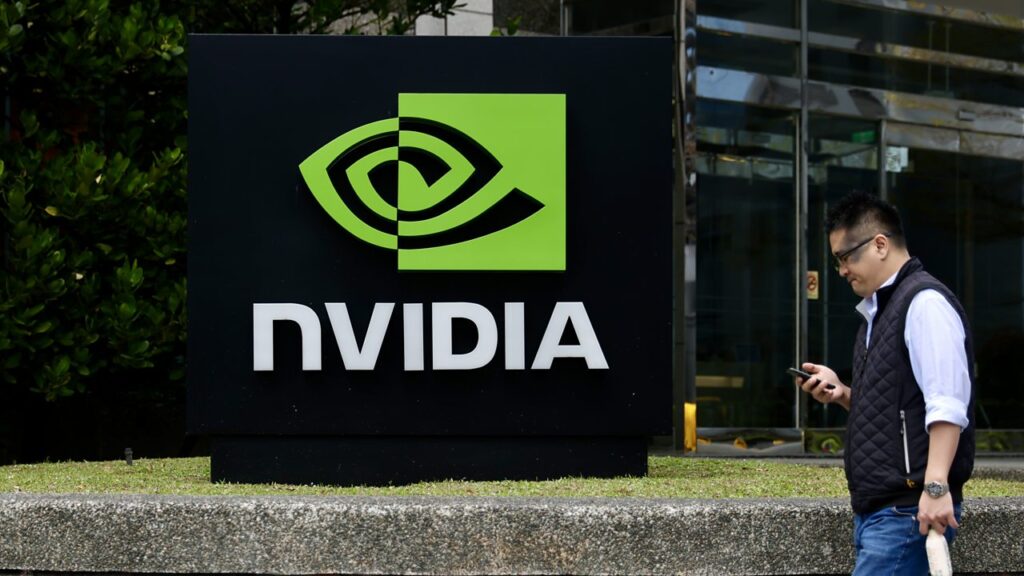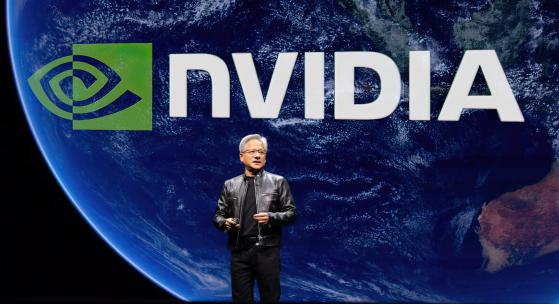
Nvidia was founded in 1993 by Jensen Huang, Chris Malachowsky, and Curtis Priem. Originally focused on graphics processing units (GPUs), Nvidia has grown to become a leader in multiple areas of technology, including AI, data centers, and autonomous vehicles.
Highlight Nvidia’s revenue growth over the years, particularly its performance in recent quarters. Mention key metrics like revenue, earnings per share (EPS), and profit margins.
Nvidia’s GPUs are central to AI research and data center operations. Future growth prospects in these sectors could continue to drive the stock higher. Mention Nvidia’s attempt to acquire Arm Holdings, and how this could impact its stock and market position, even though the deal ultimately fell through. Nvidia’s investments in autonomous driving technology are another potential growth area.
Nvidia’s GPUs have become the cornerstone of AI and machine learning applications, with their parallel processing capabilities making them ideal for handling complex computations. As AI continues to expand into various industries—ranging from healthcare to finance to autonomous systems—the demand for Nvidia’s cutting-edge technology is expected to surge. Nvidia’s CUDA platform has also become a standard in AI development, giving the company a significant competitive edge.
Looking ahead, Nvidia’s development of specialized AI chips, like the A100 Tensor Core GPU and the newer H100, positions the company to capitalize on the growing adoption of AI across both cloud and on-premise environments. The company’s ongoing research and partnerships in AI, such as its collaborations with top research institutions and AI startups, suggest a robust pipeline of innovations that could further entrench its leadership in this field.
Data centers are becoming increasingly critical as cloud computing, big data, and AI continue to grow. Nvidia has made significant strides in this space, with its data center business becoming one of its largest revenue segments. Nvidia’s GPUs are essential in training AI models, powering complex simulations, and accelerating data analytics, making them indispensable for modern data centers.
The expansion of cloud services by tech giants like Amazon Web Services (AWS), Microsoft Azure, and Google Cloud, all of which rely on Nvidia’s GPUs, suggests a strong and sustained demand. Moreover, Nvidia’s acquisition of Mellanox Technologies has bolstered its data center offerings, enhancing its networking capabilities and providing a more comprehensive solution for enterprise customers. With the continued expansion of AI and cloud computing, Nvidia’s data center revenues are likely to grow even further.
Nvidia has made substantial investments in the automotive sector, particularly in autonomous driving technology. Its DRIVE platform, which combines hardware, software, and AI, is used by many automakers to develop self-driving vehicles. Nvidia’s vision is to be at the forefront of the autonomous vehicle revolution, which could become a significant revenue stream as the technology matures and regulatory hurdles are overcome.

At the same time, the semiconductor industry’s rapid evolution, including advancements in quantum computing and AI-specific hardware, offers Nvidia the opportunity to pioneer new technologies. Nvidia’s recent introduction of Grace, its first data center CPU, signifies its ambition to expand beyond GPUs and become a more diversified semiconductor company. If successful, this could open up new revenue streams and further solidify Nvidia’s position as a tech leader.
Nvidia’s growth prospects are also influenced by regulatory and geopolitical factors. For instance, Nvidia’s attempted acquisition of Arm Holdings, which ultimately failed due to regulatory challenges, highlights the complex landscape the company operates in. While this acquisition would have significantly expanded Nvidia’s influence in the semiconductor industry, the setback does not diminish its growth potential but rather underscores the need to navigate regulatory environments carefully.
Additionally, geopolitical tensions, particularly between the U.S. and China, could impact Nvidia’s access to key markets and supply chains. However, Nvidia’s global footprint and strategic partnerships across different regions may help mitigate some of these risks.
Over the past decade, few companies have demonstrated the kind of relentless innovation, market leadership, and explosive growth that Nvidia has. As we look ahead, Nvidia’s position as a transformative force in multiple high-growth industries makes it arguably the best investment opportunity in the last ten years. Here’s why:
Unprecedented Growth in AI and Data Centers
Artificial intelligence is not just a buzzword—it’s the future of technology, and Nvidia is at the very heart of this revolution. The company’s GPUs have become the gold standard for AI processing, with their unparalleled ability to handle complex computations making them indispensable across industries. Nvidia’s AI platforms power everything from healthcare diagnostics to financial modeling, and this is just the beginning. The AI market is expected to grow exponentially, with projections suggesting it could reach trillions of dollars in the next decade. Nvidia is perfectly positioned to capture a significant share of this booming market.
Additionally, Nvidia’s data center business is booming, growing from a niche segment to one of the company’s largest revenue drivers. In an increasingly digital world, data centers are the backbone of cloud computing, big data, and AI, all of which rely heavily on Nvidia’s technology. As more companies migrate to the cloud and adopt AI-driven solutions, Nvidia’s revenue from data centers is expected to soar, providing a robust and sustainable growth engine.
Dominance in High-Growth Industries
Beyond AI, Nvidia has strategically positioned itself at the forefront of several other high-growth industries, each with the potential to generate massive returns. In the gaming industry, Nvidia’s GPUs are the undisputed leaders, powering not only the latest PC games but also virtual reality and augmented reality experiences. As the gaming industry continues to expand, especially with the rise of esports and cloud gaming, Nvidia’s dominance ensures a steady and growing revenue stream.
The automotive industry is another massive opportunity. Nvidia’s investments in autonomous driving technology and advanced driver-assistance systems (ADAS) are set to revolutionize transportation. While the autonomous vehicle market is still in its early stages, Nvidia’s partnerships with leading automakers and its innovative DRIVE platform position the company to be a major player as this industry evolves. The potential for Nvidia to become the leading technology provider for autonomous vehicles could be a multi-billion-dollar opportunity in the coming years.
Innovation and Strategic Vision
What sets Nvidia apart from many other tech companies is its relentless focus on innovation and its visionary leadership. CEO Jensen Huang has consistently demonstrated an ability to anticipate and capitalize on technological trends, often years ahead of the competition. Nvidia’s early move into AI, its development of the CUDA platform, and its foray into the metaverse with Omniverse are all testaments to its ability to stay ahead of the curve.
This strategic vision has not only driven Nvidia’s growth but has also insulated the company from many of the risks that typically affect tech stocks. Nvidia’s diversification across multiple high-growth sectors—gaming, AI, data centers, automotive, and now the metaverse—ensures that it is not overly reliant on any single market. This diversification provides a balanced risk profile, making Nvidia a more stable investment compared to other tech companies that may be more exposed to market volatility.

Nvidia’s financial performance over the past decade has been nothing short of extraordinary. The company has consistently delivered strong revenue growth, impressive profit margins, and increasing earnings per share (EPS). Nvidia’s stock price has reflected this performance, with the company’s market capitalization growing from around $10 billion in 2014 to over $1 trillion in 2023, a testament to the market’s confidence in its future prospects. Moreover, Nvidia’s financial health gives it the flexibility to invest in R&D, make strategic acquisitions, and weather any economic downturns. The failed acquisition of Arm Holdings, while a setback, underscores Nvidia’s ambition and ability to pursue game-changing opportunities. Despite this, Nvidia’s continued growth and innovation demonstrate that it remains on a strong upward trajectory.
The Future is Here, and Nvidia is Leading It
When you invest in Nvidia, you’re not just buying into a company—you’re buying into the future of technology. Whether it’s AI, gaming, autonomous vehicles, or the metaverse, Nvidia is leading the charge in industries that are set to define the next decade. The company’s technological advancements are not just incremental—they are transformative, offering the potential for exponential growth.
Investors who recognized Nvidia’s potential early have already seen incredible returns, but the opportunity is far from over. As Nvidia continues to innovate and expand into new markets, the potential for growth remains enormous. The combination of strong financials, market leadership, and a visionary strategy makes Nvidia a uniquely compelling investment. In a world increasingly driven by AI and digital experiences, Nvidia’s stock isn’t just a good investment—it’s potentially the best opportunity of the decade.
Seize the Opportunity
In a landscape where technology is evolving at breakneck speed, Nvidia stands out as a beacon of innovation and growth. The company’s ability to dominate multiple high-growth markets, coupled with its strong financial performance and strategic vision, makes it an unparalleled investment opportunity. For those looking to invest in the future, Nvidia offers a rare chance to be part of the next wave of technological transformation. This is not just another stock—this is the investment of a lifetime.





